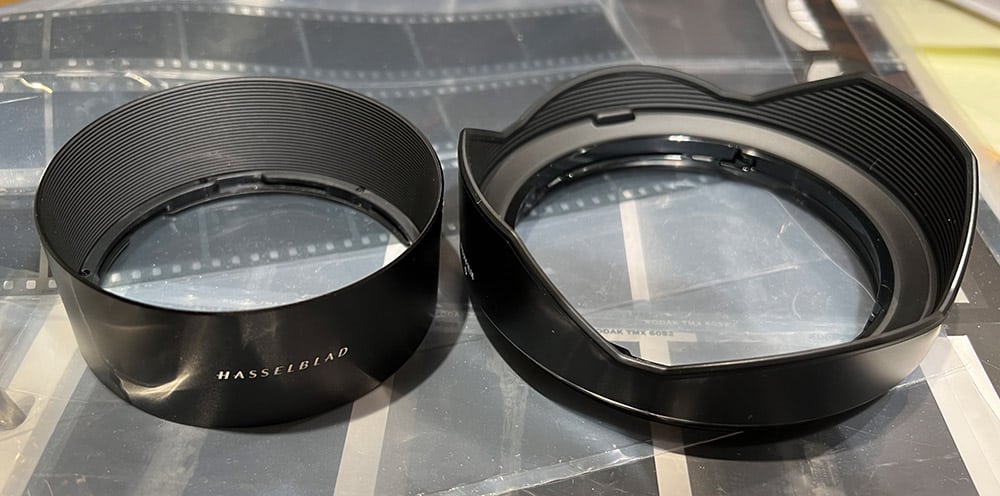The last two lenses that I bought have quite different lens shades.
- The one on the left is for the Hasselblad XCD 38 mm f/2.5 lens. The one on the right is for the Fuji 20-35 mm f/4 GF lens.
- The one on the left is made of metal. The one on the right is made of plastic.
- The one on the left is cylindrical. The one on the right has a tulip profile.
If you drop a plastic lens shade, it will bounce. I hate metal lens shades. If you drop them, they will most likely bend. If you’re unlucky enough to drop them on the end that mates to the lens, you may never be able to use them again. Thanks to prior purchases of several Zeiss lenses, I have lots of experience with metal len shades, and almost all of it is bad. I don’t know about Hasselblad, but Zeiss adds injury to insult by charging an arm and a leg for replacement shades.
I like tulip shades. They shade the front element as much as they can without intruding into the picture. Cylindrical shades don’t stick out as far as they could where you need it.
Grr…

The Hasselblad XCD30 has a tulip metal shade.
So has the Hasselblad XCD 21.
And so have a number of other HC, HCD and XCD lenses..
As for the cylindrical ones, the only one I managed to bend was the one of the XCD 80, when I fell down a flight of bell tower stairs, and X1D + XCD 80 hit the wooden floor below. I suffered some injury, camera + lens only a slightly ovalised lens shade (the lens shade had been reversely mounted, and took the brunt of the impact). No decentering or other damage – to my surprise – down to pixel level on optical bench, no other degradation, many months after they still work fine… luck, I guess…
I am not sure I want to try that with my GFX-100S or my GF lenses – or any other, again…